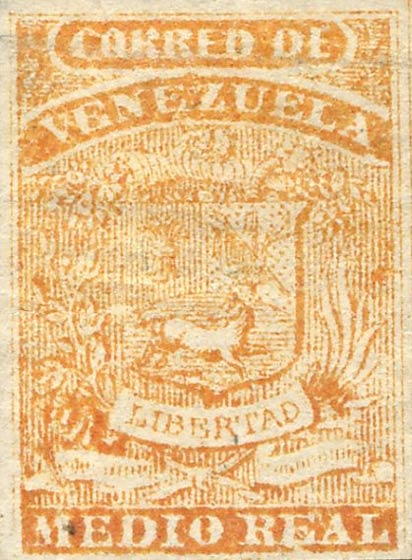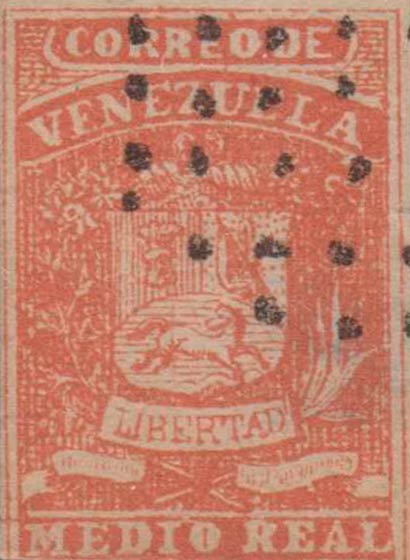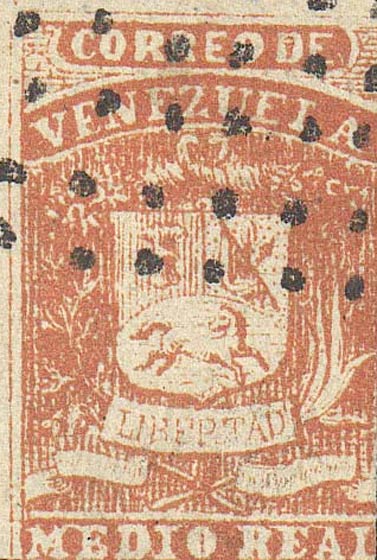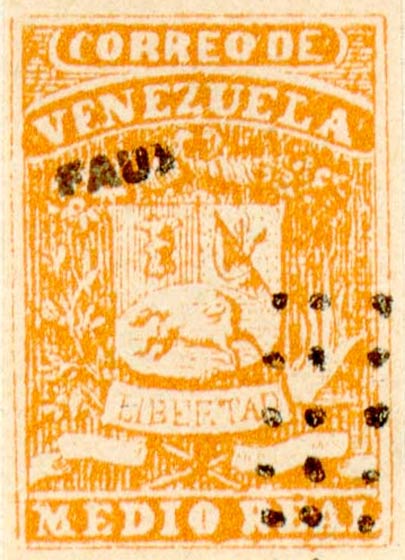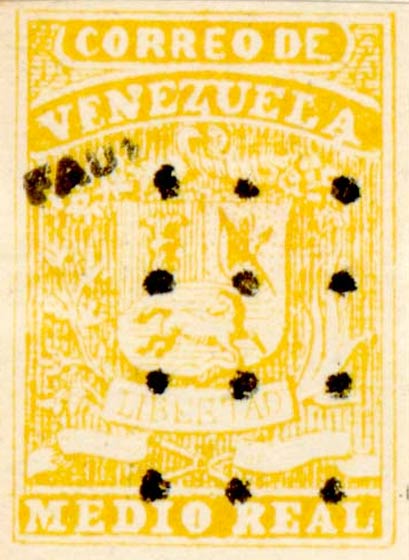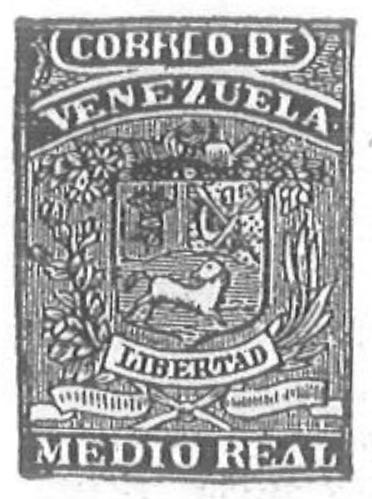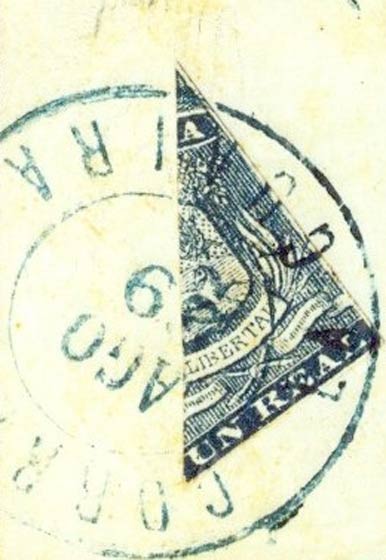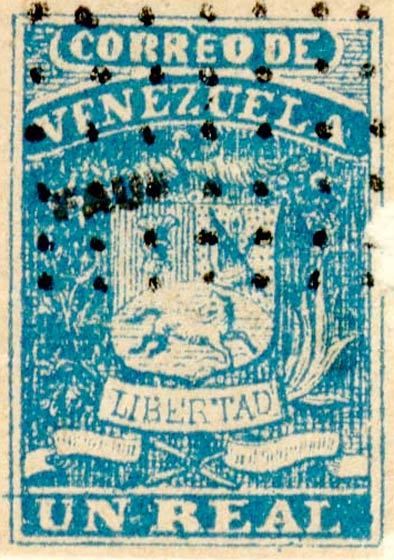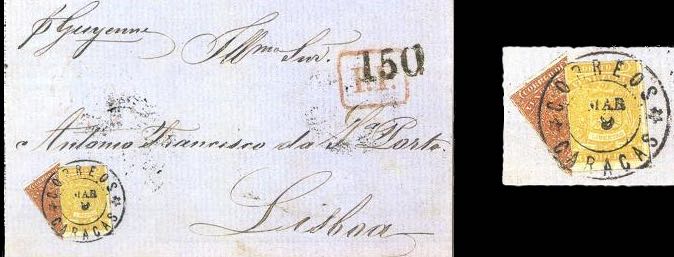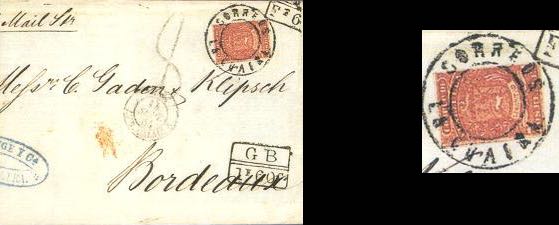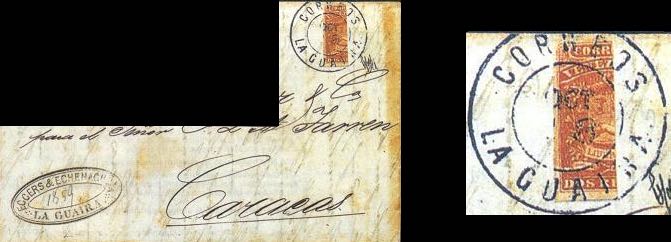1859. Coat of Arms. Medio Real
Genuine vs. Forgeries
There are at least 7 different types of forgeries
Postmarks that consists of dots were never used in Venezuela, so these are easily identified as forgeries.
Illustration by Plácido Ramón de Torres: Album ilustrado de sellos de correo, Barcelona 1879. Torres sold illustrations to various dealers/forgers from 1864 onwards, as well as made forgeries himself.
1859. Coat of Arms. Un Real
Genuine vs. Forgery
There are at least 7 different types of forgeries
Postmarks that consists of dots were never used in Venezuela, so these are easily identified as forgeries.
1859. Coat of Arms. Forged Covers
1 1/2 real postage does not tally with the rate for letters from Venezuela to Europe. Likewise, the postmark P.P. did not exist in Venezuela. The postmark on the back “P.Transatlantico” is dated 27.3.1853 when Venezuela had no seal. The postmark on the 1/2 Real is real, but the parts about the bisect and cover are forged.
The first issue was valid only until the end of October 1863. The postmark of la Guaira without date was only used after 1867. The false postmarks letters are clearly different from the genuine.
The postmark is clearly different from the authentic ones. The 2 new Reales of the fine print is common, while the 1 new Real of that same impression is rather weak. Normal rate between Caracas and La Guaira was 1/2 Real. The bisect of a 2 Reales authentic usage was at the end of 1860 in the Western provinces, where the stock of 1 Real first impression, often used, was sold out long before the 1, actually printed locally in April 1861, was available.

